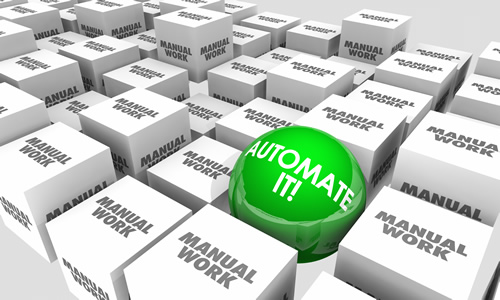Across the country, K-12 schools are embracing technology to strengthen learning and engagement inside the classroom. But while technology has an ever-increasing presence in the classroom, the opposite is often true when it comes to a district’s back-end operations.
Due to aging systems, many accounts payable (AP) departments within school districts still rely on manual, legacy, or proprietary systems to perform critical functions like expense and invoice submission and reimbursement. This lack of automation and visibility into their expenses can end up costing a school district more in the long run, due to errors and the increased time a non-automated system takes.
As technologies quickly advance, a delay in making updates to your systems can invite risk. So why are schools still leveraging antiquated technologies? Unfortunately, it’s typically not by choice. It comes down to budget constraints and aversion to change that can cause districts to stall investing in new systems.
A tale of an AP upgrade
At Rochester (NY) City School District (RCSD), I struggled to keep up with our error-prone paper-driven process. We had thousands of expense reports to process and were doing it all by hand. This paper-driven system was inefficient and ineffective in tracking mileage—one of the more numerous employee expenses for the 57 schools in our district. The amount of effort required to process these reports was taking a toll on my AP team. And the lack of visibility and potential for errors was ending up costing the district more in the long run.
With ever-changing government and industry regulations, I also became increasingly concerned about visibility into our spend and having the right data to make decisions that have a positive impact on my district. Our system, like so many other legacy systems that districts are still using today, just wasn’t capable of meeting growing expense and invoice management demands. Without approved and final expense reports, we had little time to identify unseen spend and liabilities that were lying around, which we typically received in paper form at the end of the year or during a new fiscal year.
My team determined our longstanding manual processes no longer had the agility and accuracy that are required to redirect costs with spending and comply with complex regulatory standards, so we turned to automation. By investing in SAP Concur for our travel, expense, and invoice needs, we were able to reach three very common AP goals:
1. Improve efficiency: By moving employee-reimbursement programs to an automated or cloud-based system, we almost immediately realized considerable time savings as well as a reduction in errors. Even more important, employees received their reimbursements sooner because we were able to streamline the process.
2. Gain visibility: You don’t know what you don’t know. Our manual systems didn’t allow real-time visibility into what was being spent. In fact, there were often expenses that didn’t show up until the end of the year. With an automated system, we can track expenses that will have an impact on our larger budget, allowing us to better manage budget. For example, we are now able to better track unexpected non-purchase-order expenses like reimbursements and stipends for district staff.
3. Automation to ensure compliance: The paper-driven system, used for nearly $150 million annually, didn’t allow full visibility of spend across our 57 schools. With an automated system, we now have the controls in place to quickly detect potentially fraudulent requests and data-entry errors, while also meeting compliance standards. In fact, we’ve been able to reduce compliance failures and eliminate 60 percent of travel and expense errors. In turn, our team can enforce existing policies, which yielded fewer rejections of expense reports and led to more successful audit outcomes.
Automation empowers school districts of all staff and budget sizes to redirect costs to mission-critical needs, and in the case of AP, optimize efficiency, reduce fraud and oversights, and uphold critical AP policies. Through automation, our team can now more effectively reduce the amount of potentially fraudulent errors and ineligible expenses, while also successfully tracking payment requests and meeting controls. Over time, we expect to reduce the number of unseen liabilities and lower the total amount of audit rejects received by 50 percent.
- 4 ways to encourage play in education - April 25, 2024
- CoSN IT Leader Spotlight: Lisa Higgins - April 25, 2024
- It’s time to pay student teachers - April 25, 2024

